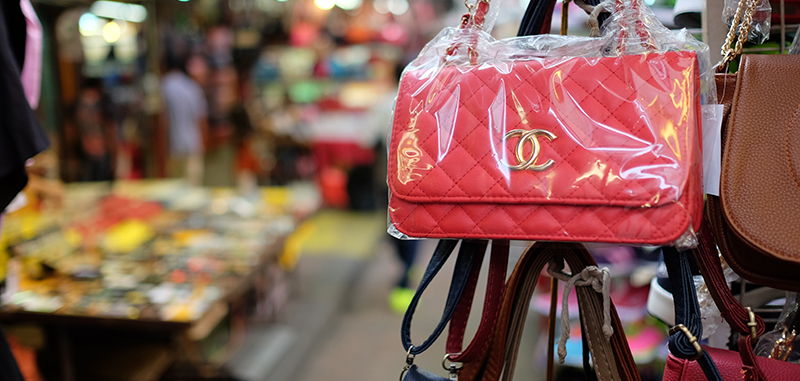
(This blog is Part 1 in our ongoing series on brand protection.)
Your brand is more than a name. It’s more than a logo, more than colors, and more than an aesthetic. Your brand is not even your product.
Your brand lives in the minds of your customers and potential customers. How they perceive the total experience of buying and using your products and services – and interacting with your company in any way – is what defines your brand.
And your brand is worth protecting. Any negative perception of your product or your company equates to a loss of trust from customers and potential customers. In a competitive market, even a small amount of damage to your brand can be devastating.
Why Might You Need Brand Protection?
It’s important to recognize that harm can befall your brand from outside your company. Third parties may disrupt your carefully managed brand reputation by passing off their products as yours or selling your products without your permission.
The term brand protection refers to measures your company can take to prevent this kind of image hijacking. Over the next several months, we’ll be writing a lot about brand protection on this blog. We’ll explore when you need it, explain your many options for brand protection, and help you deploy the brand protection features that are right for your business.
Let’s begin by reviewing four scenarios that may call for an investment in brand protection:
1. Counterfeit Sales
The sale of fake products costs the global economy up to a quarter of a trillion dollars each year. Online marketplaces make it easier than ever to purchase counterfeit items unknowingly.
Counterfeiting is not just a problem for handbag designers and watchmakers. If it can be made, it can be faked, and that applies to industries as wide-ranging as pharmaceuticals, consumer electronics, and footwear.
Every time a consumer buys a shoddy knockoff and thinks it’s your company’s product, your brand takes a hit. Brand protection keeps your customers safe from those who would take advantage of their loyalty to your brand, and it protects your reputation for high quality and excellent customer service.
2. Unauthorized Sales
Your company has a very carefully planned sales strategy. You know all the distributors that sell your products, and you have agreements about the prices they can charge and the markets they can target. Yet when you go to an online store, you see unfamiliar sellers offering your products.
This is the so-called “gray market.” The products are, for the most part, genuine, but the sales are unauthorized.
Gray market sales can occur when unauthorized parties sell your products without your permission. They can also happen when your authorized partners sell your products outside the terms of your agreement. For example, they could reroute a shipment into an unapproved territory. Or they could undercut your other partners on price.
Brand protection can help you keep track of your products throughout your supply chain, monitoring them every step of the way so they never end up in the wrong hands.
3. Warranty Fraud
These days, warranty processing is often outsourced to third-party logistics providers who are charged with receiving, reviewing, and validating warranty requests. And frequently, instead of performing repairs, these providers will simply send replacement products.
Unethical people may try to take advantage of the holes in this system, sending in counterfeit products for repair and getting genuine products back in return. As a result, your company may find itself warrantying products you didn’t even manufacture.
Brand protection tools can give your warranty processors a surefire way of authenticating products before fulfilling warranty requests.
4. Product Tampering
Your customers need to be able to trust the integrity of your products, especially in categories like pharmaceuticals, food, or beverages, where toxic contaminants can endanger their health. Tamper evident brand protection features give your customers confidence, knowing that the contents of their purchases have not been altered on the journey between your warehouse and their home or business.
When Should You Think About Brand Protection?
Unfortunately, most companies don’t consider taking steps to secure their brands until after they face something like a rash of counterfeit sales or a product tampering incident. But you can stop those disasters from impacting your reputation and your bottom line by implementing brand protection strategies proactively.
In coming posts, we’ll break down the two main categories of brand protection technology: covert and overt security elements. Then we’ll introduce more advanced forensic markers. Stay tuned!
If you’re interested in exploring your brand protection options right now, click here to get in touch with the experts at the Label Printers.

